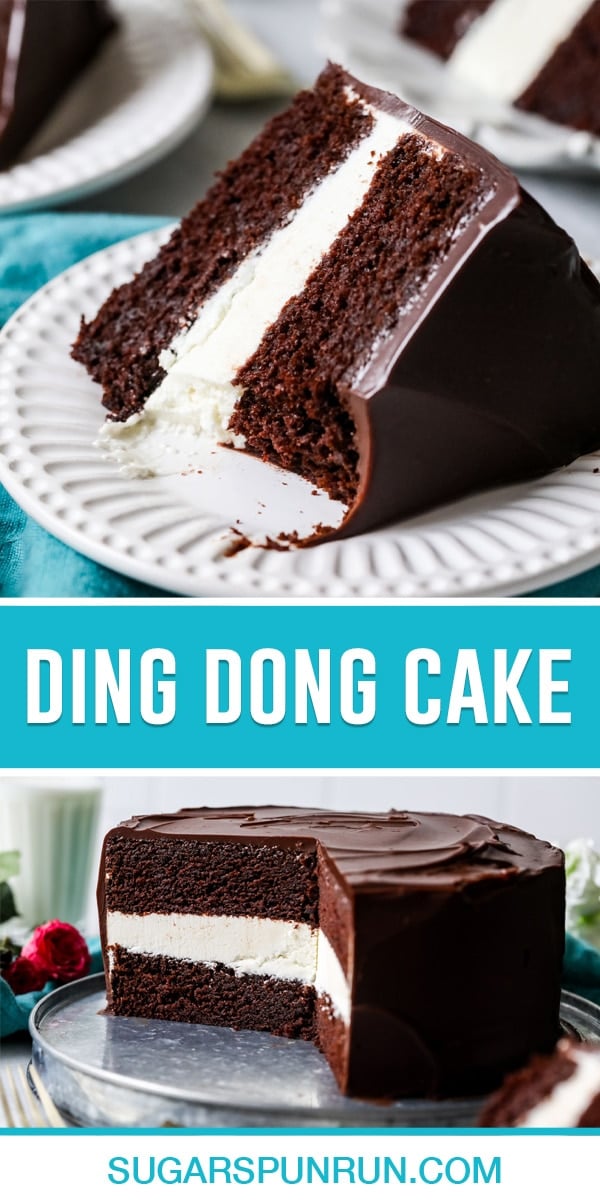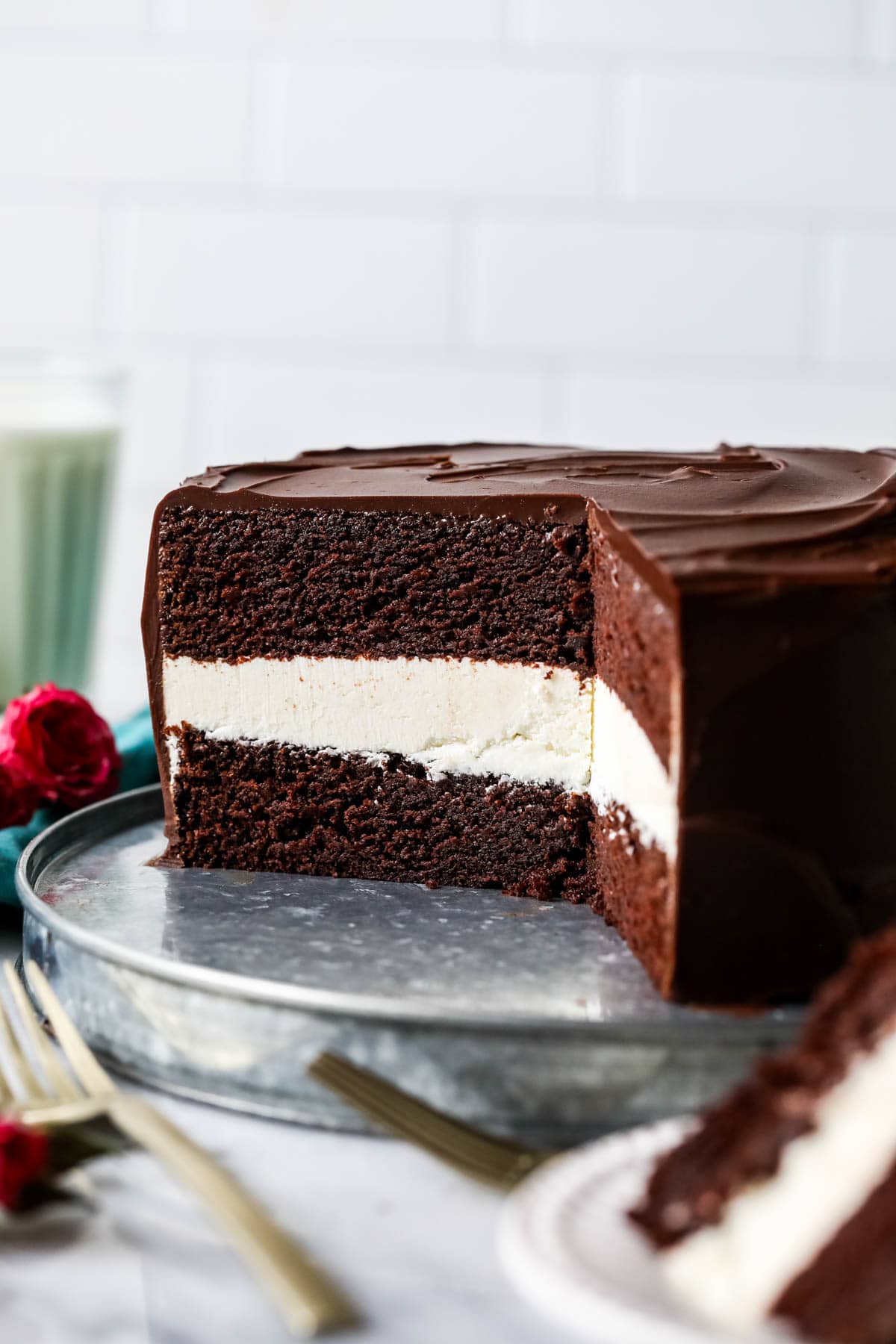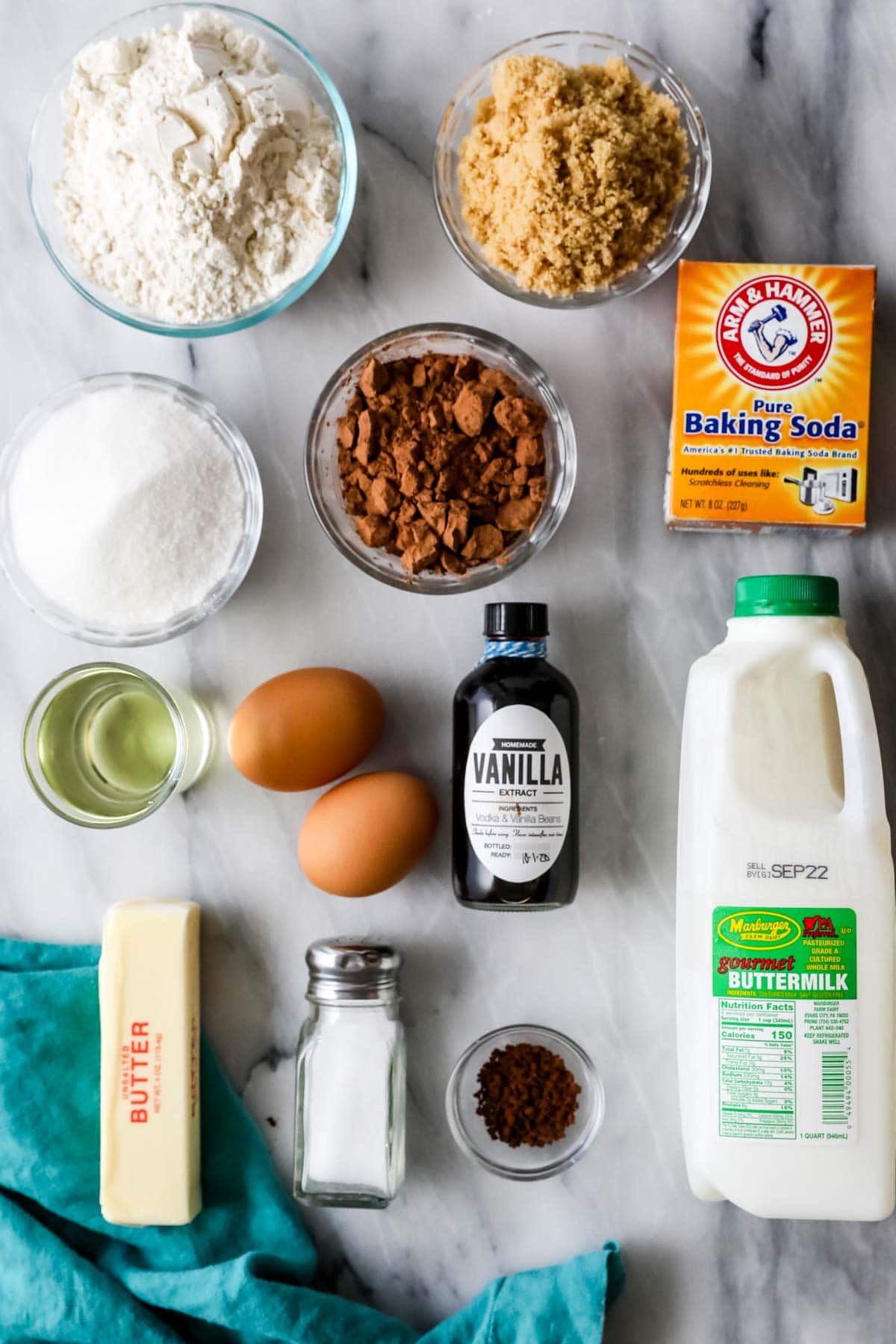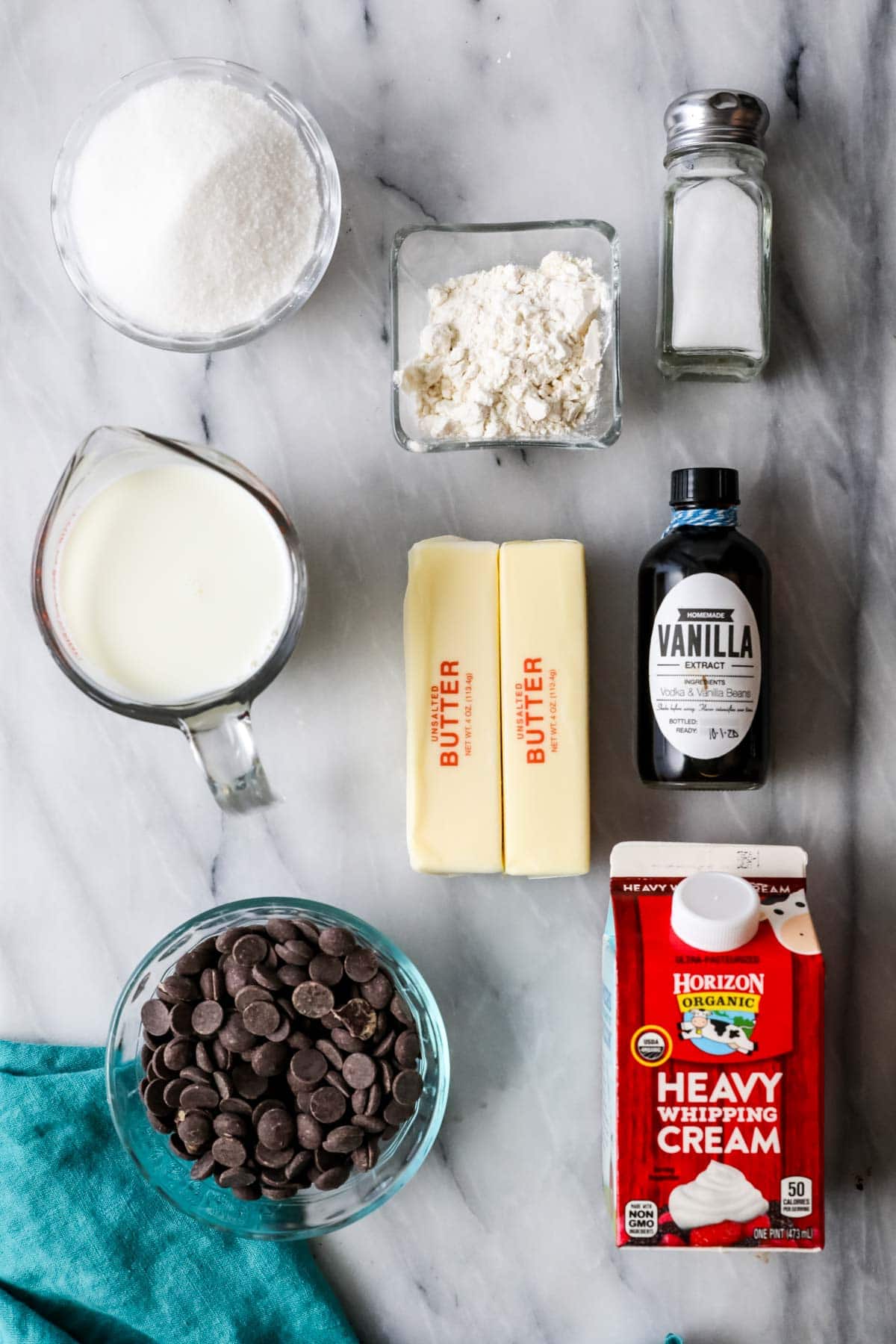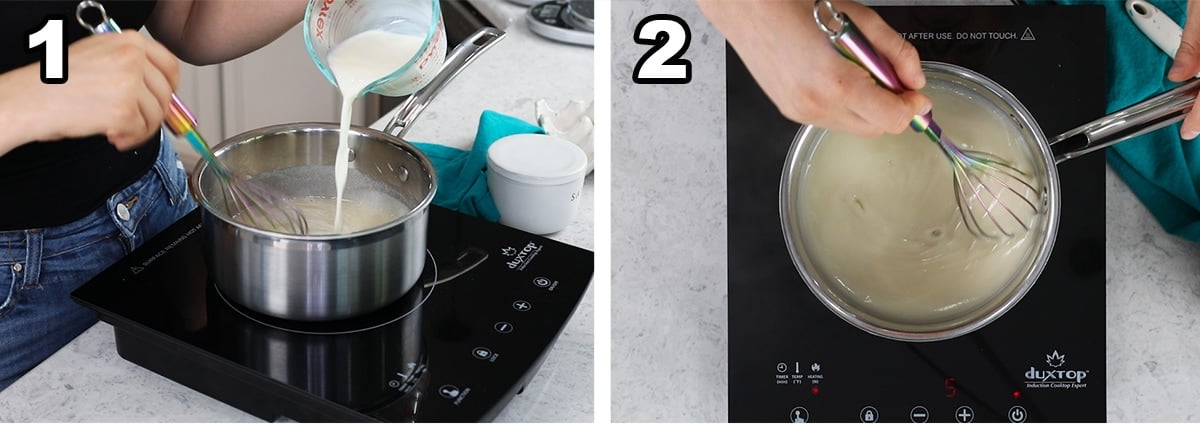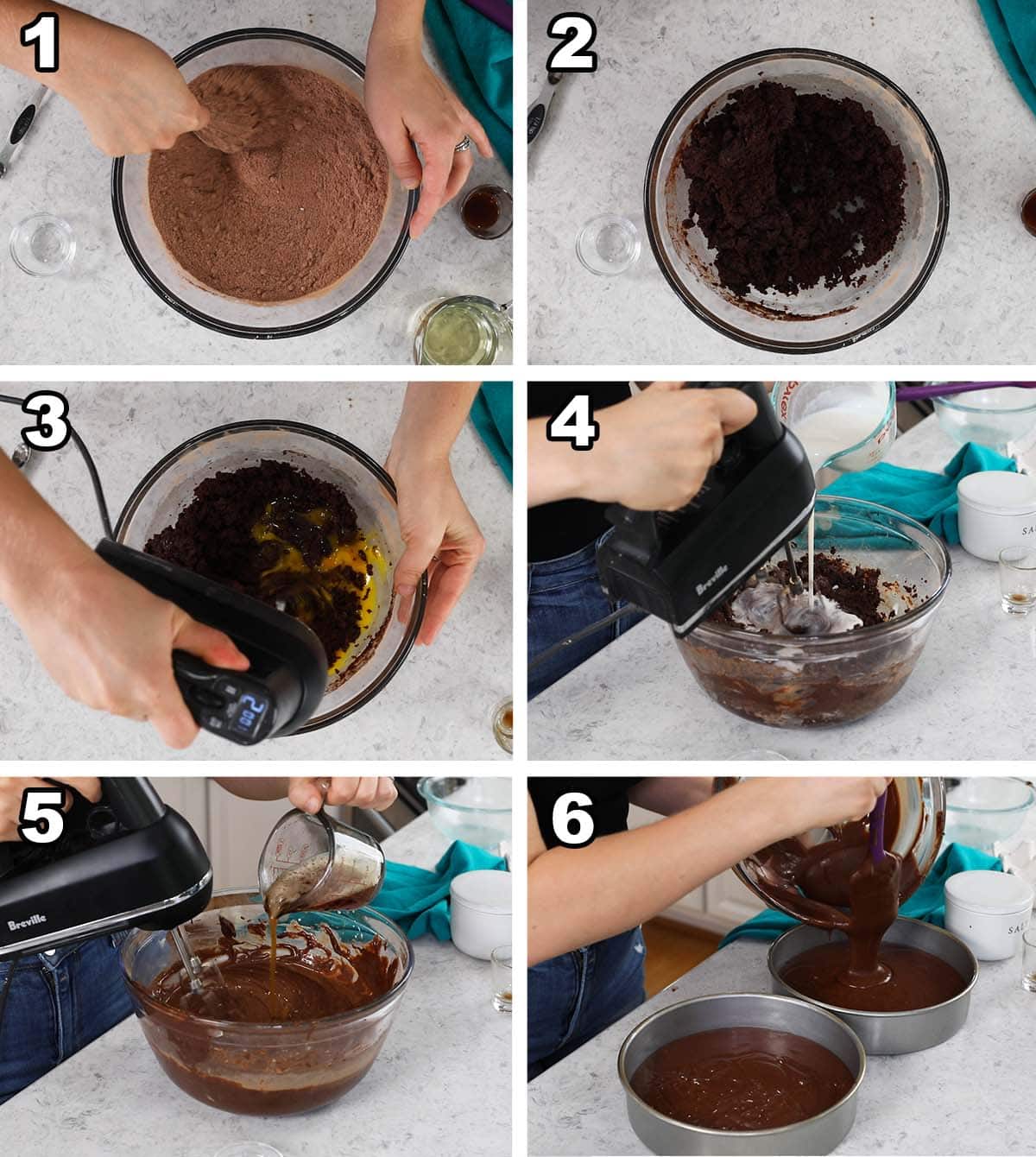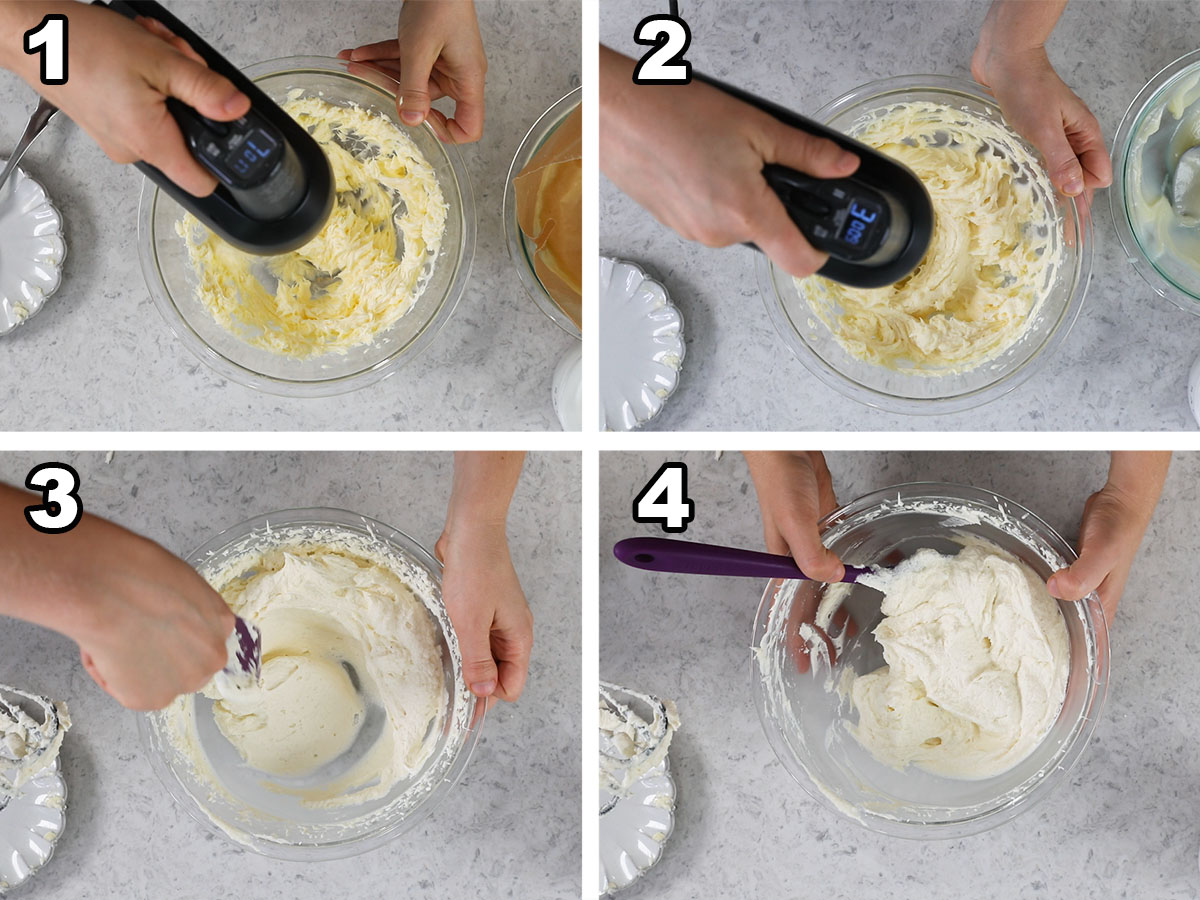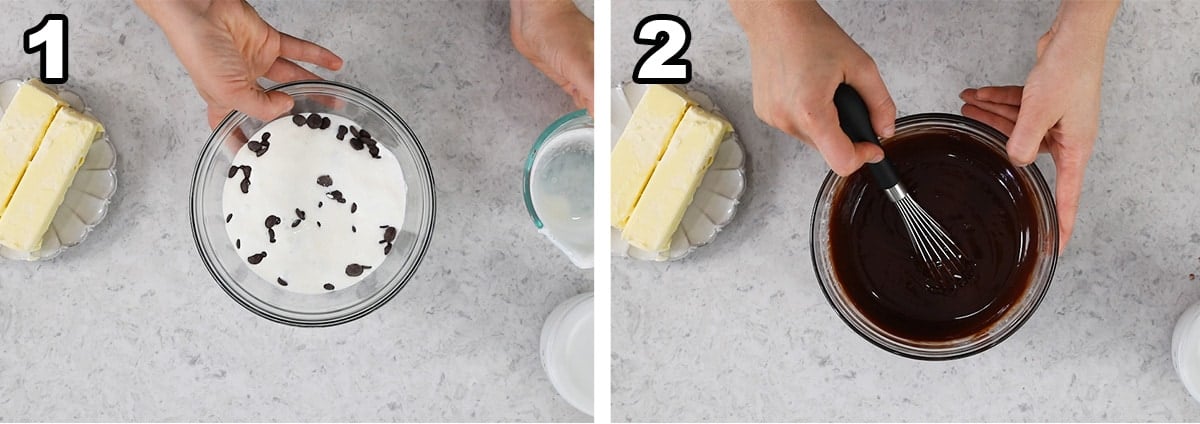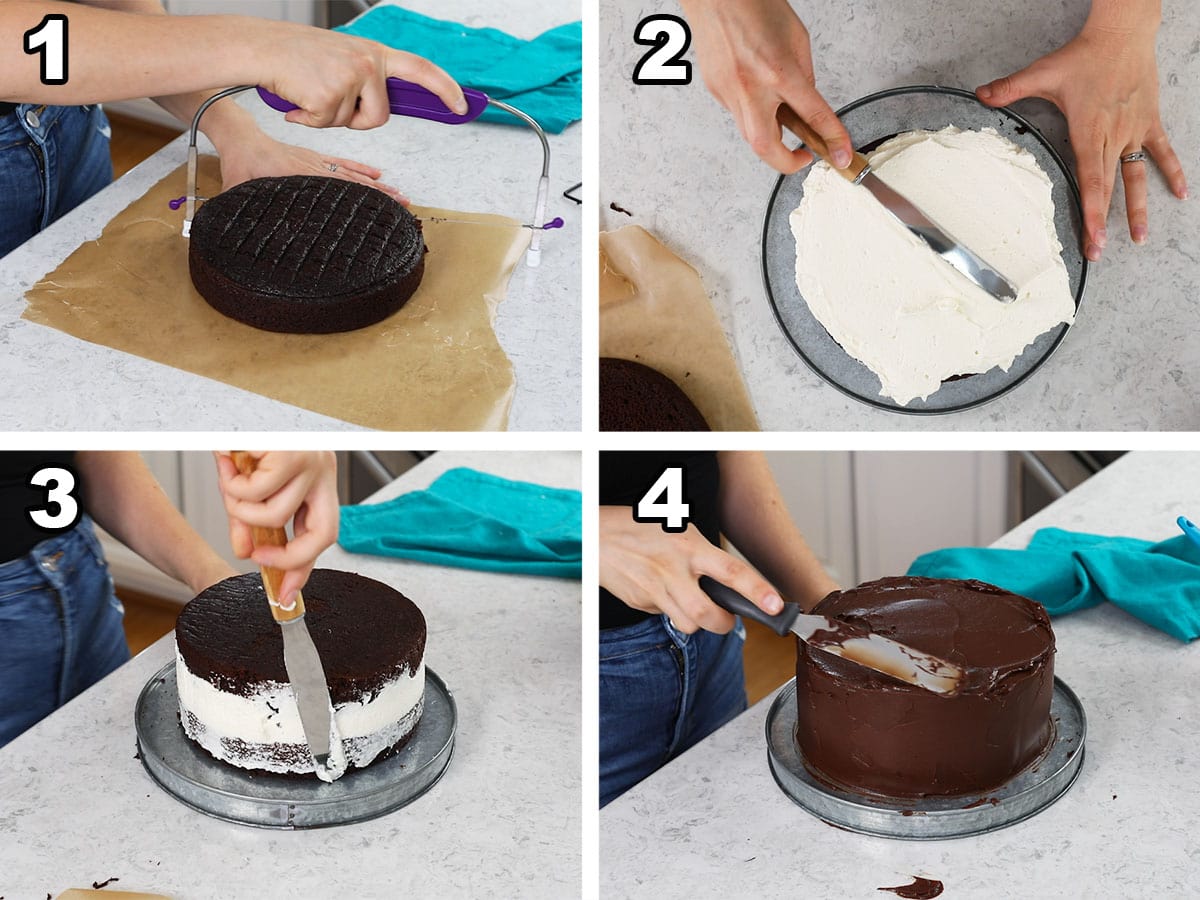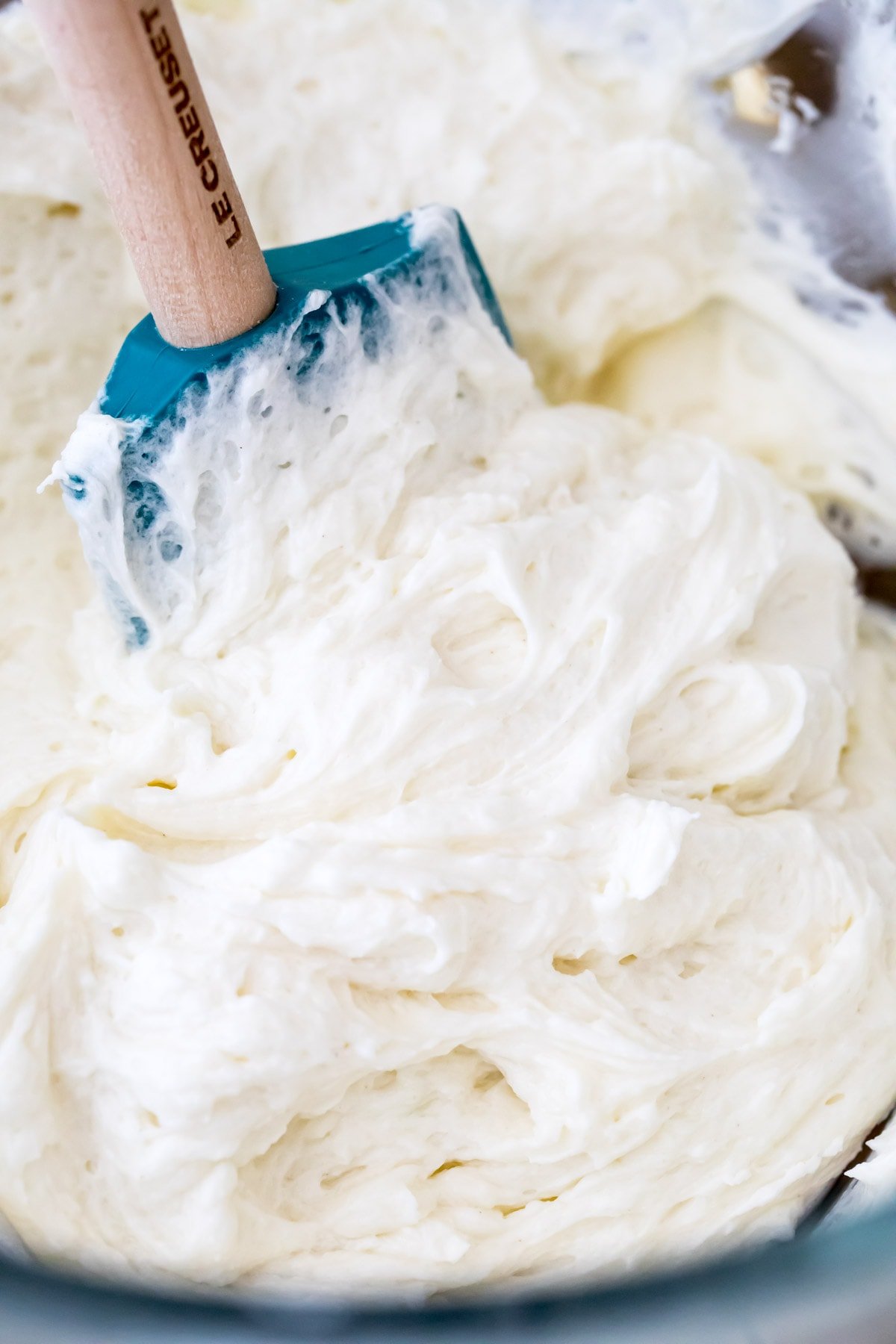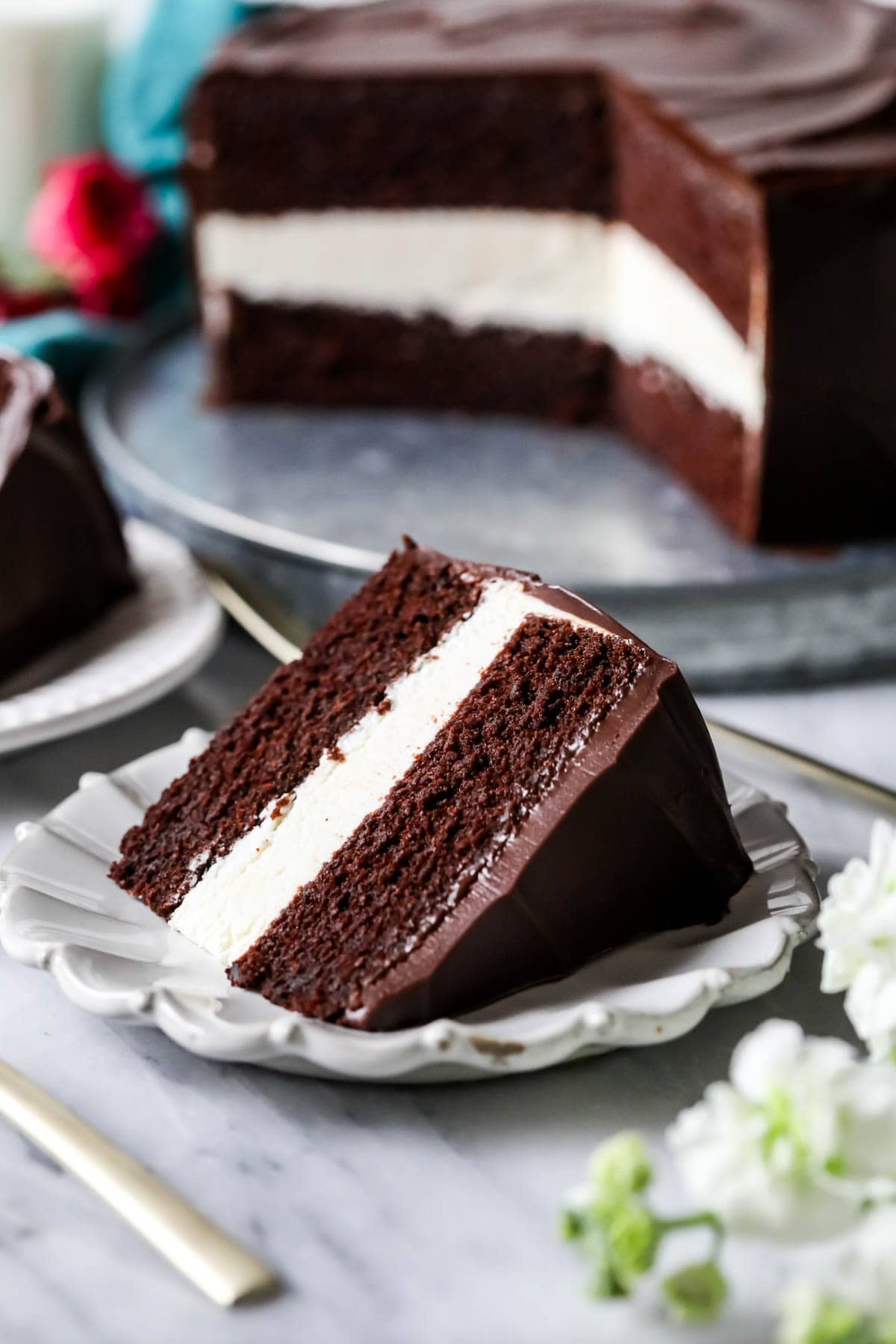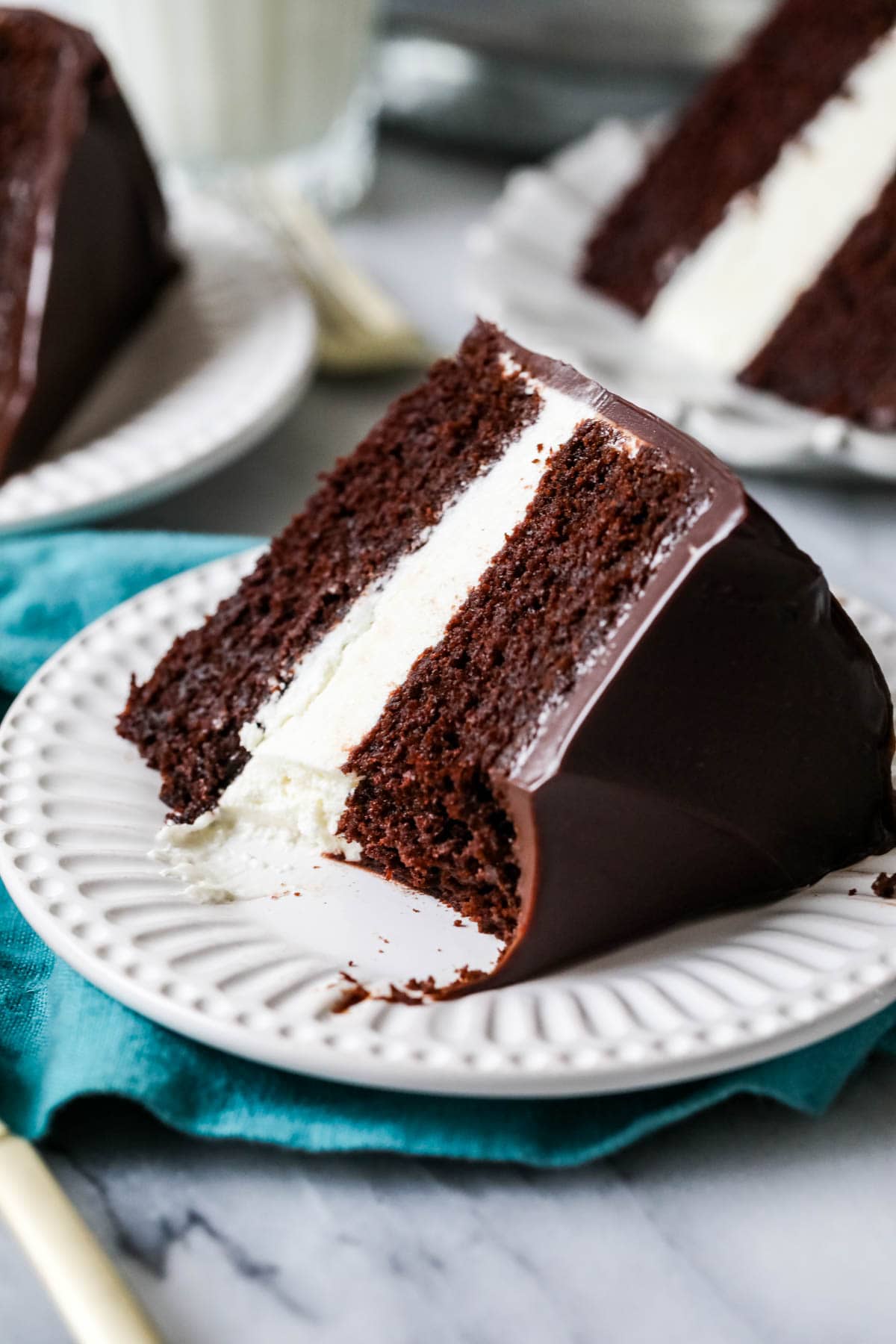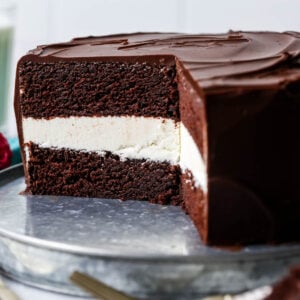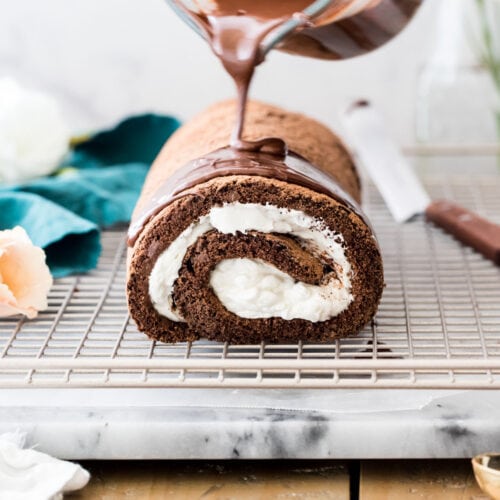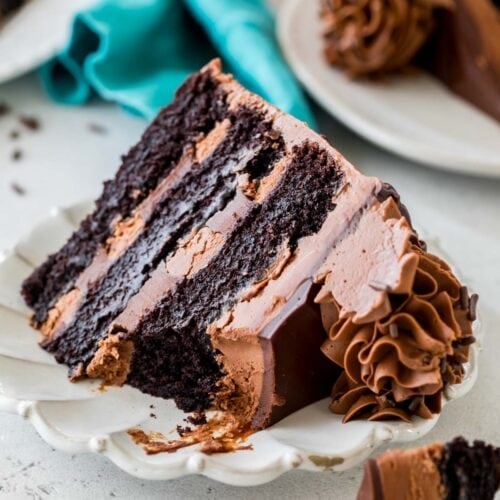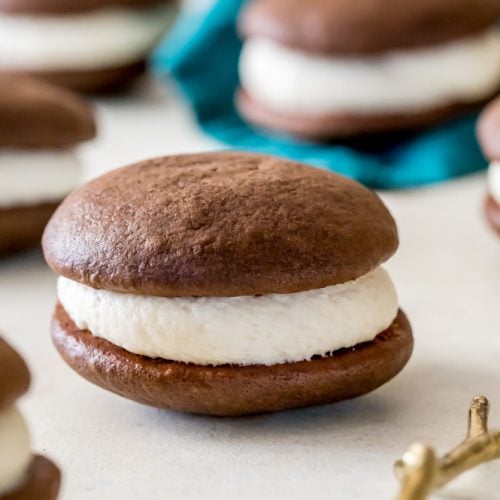A Childhood Treat, Reimagined
Allow me to introduce you to the cake that I’ll be using for all birthdays in the foreseeable future (including my own): Ding Dong cake! Inspired by the beloved childhood treat, the cake is perfectly chocolatey and paired with the most luxurious cream filling. It’s fun, the textures are amazing, and it’s just so satisfying. And yes, it has a super silly name, but let’s just look past that because this cake truly is a star 😉
The three elements of this Ding Dong cake:
Chocolate cake base that’s soft, chocolatey, and melts in your mouth. It also holds up well to refrigeration, which is important since this cake should be refrigerated. Silky smooth filling made from old fashioned ermine frosting. This is not too sweet and perfectly emulates the filling in Ding Dongs! Unlike traditional buttercream frosting, ermine frosting actually begins on the stovetop with granulated (not powdered!) sugar. It can be bit tricky to make, so check out my troubleshooting section before starting to avoid any issues. Fudgy chocolate ganache frosting which, again, perfectly emulates a Ding Dong.
Because ermine frosting can be a bit finicky and the chocolate ganache can be a little tricky to gauge, I wouldn’t necessarily call this Ding Dong cake an “easy” recipe to make. However, it’s also not a difficult recipe either, so I’d say it’s intermediate. Really though, I think anyone could make this cake if they follow the instructions closely. Personally, this is one of my favorite cakes (it’s right up there with carrot cake!), and I cannot wait for you to try it! Let’s dig in!
What You Need
For the Cake
Let’s first go over the key ingredients in the cake layers for this Ding Dong cake. Then I’ll highlight a few ingredients for the filling and frosting.
Buttermilk. Buttermilk makes this cake is incredibly moist, soft, and flavorful. If you don’t have the real stuff on hand, my easy buttermilk substitute will work–but I highly recommend getting the real thing if you can. Hot coffee. The reasoning behind adding hot coffee is twofold; first, adding a hot liquid will help “bloom” the cocoa powder and intensify its flavor. Second, adding coffee specifically will also up the chocolate flavor (without making the Ding Dong cake actually taste like coffee!). If you don’t have any coffee on hand though, very hot water will work. I keep instant coffee on hand specifically for using in my cakes. Cocoa powder. It’s important that you use natural cocoa powder since we are only using baking soda in this recipe. Dutch process cocoa could cause rising issues. If you’d like to learn more about this distinction, read my post on natural vs. Dutch process cocoa. Sugar. I like to use both granulated and light brown sugar in my chocolate cake; this not only adds depth of flavor, but it also makes the cake incredibly moist too! Egg + egg yolk. Adding an extra egg yolk to the batter makes this cake supremely tender and melt-in-your-mouth. If you don’t want to throw away the egg white, save it for meringue cookies or candied pecans.
For the Filling & Topping
Granulated sugar. Using just one cup of granulated sugar instead of several cups of powdered sugar means this ermine frosting is far less sweet than your classic buttercream frosting. It also means the frosting must be cooked on the stove to dissolve the sugar–more on this below! Flour. This might seem like a strange ingredient for a frosting, but flour is a classic ermine frosting ingredient. It thickens the filling base into a pudding-like consistency, which we will let cool and then whip into butter. Butter. It’s very important that your butter is softened to room temperature (but not melty) before combining it with your cooked filling base. If it’s not, your filling could curdle OR turn out too runny. I use unsalted butter. Vanilla. I actually prefer to use clear artificial vanilla extract for the filling to mimic the bright white color and artificial flavor of the filling in real Ding Dongs. Feel free to use regular vanilla extract though! Chocolate. Use semi-sweet chocolate, either from a chopped baking bar, couverture chocolate, or chocolate chips. Personally, I tend to avoid making ganache with chocolate chips, but they can still work.
SAM’S TIP: Make sure to whisk your flour well (or sift it, after measuring) before adding the milk; otherwise, you could end up with a lumpy filling. Remember, this is just an overview of the ingredients I used and why. For the full recipe please scroll down to the bottom of the post!
How to Make Ding Dong Cake
Make the Filling Base
If you’ve ever made my whoopie pies or frosted a red velvet cake, you’ve likely made this old-fashioned frosting before. It looks a bit different from some of the frostings I’ve shared in the past and is slightly more complicated, but it isn’t difficult and is worth the extra effort. Before you can whip this into what truly resembles a frosting, we start with a simple roux as the base:
Make the Cake Layers
Make the Filling
Only start this step once your filling base has cooled completely! Do not rush this process, or you will end up with a greasy, runny filling.
Make the Ganache Frosting
Assembly
SAM’S TIP: Leveling your cakes is always a good idea, but it’s especially important with such a soft frosting/filling as the ermine frosting we’re using for this Ding Dong cake. If the cakes are too domed, they’re likely to slide off one another!
Troubleshooting: Ermine Frosting
Ermine frosting is not a particularly complicated frosting, but it can be a bit fussy and curdle (but don’t worry, it can be fixed). Here are my tips for perfect ermine frosting:
Have patience. Don’t try to rush the cooking process for the roux. Similarly, don’t rush the cooling process either…more on this next. Cool the roux. If you mix the roux and the butter while the roux is still warm, it will create a greasy mess. Let it cool completely to avoid this issue. Beware the butter. Soften the butter, but don’t let it get so soft that it’s melty or oily. If it is, your frosting will be far too runny. On the other hand, if the butter is too cool, your frosting could split. Ideally, both the butter and the roux should be the same temperature (near room temperature).
The most important thing you can do is to make sure that the butter and roux/base are the same temperature before combining! Otherwise, your frosting will be prone to curdling. If your follow these rules and still run into issues, try these fixes:
For frosting that seems too soft, try letting it sit in the fridge for 20-30 minutes. For frosting that has curdled, simply keep whipping until it comes together. If it looks like it’s just getting worse, place the bowl in the fridge for about 20 minutes, then try again. Most of the time, this does the trick!
If you’re looking for more unique birthday cakes, try my pistachio cake or snickerdoodle cake next! Enjoy! Let’s bake together! Subscribe to my newsletter and make sure to follow along on YouTube where I have over 500 free video tutorials! 💜
Related Recipes
